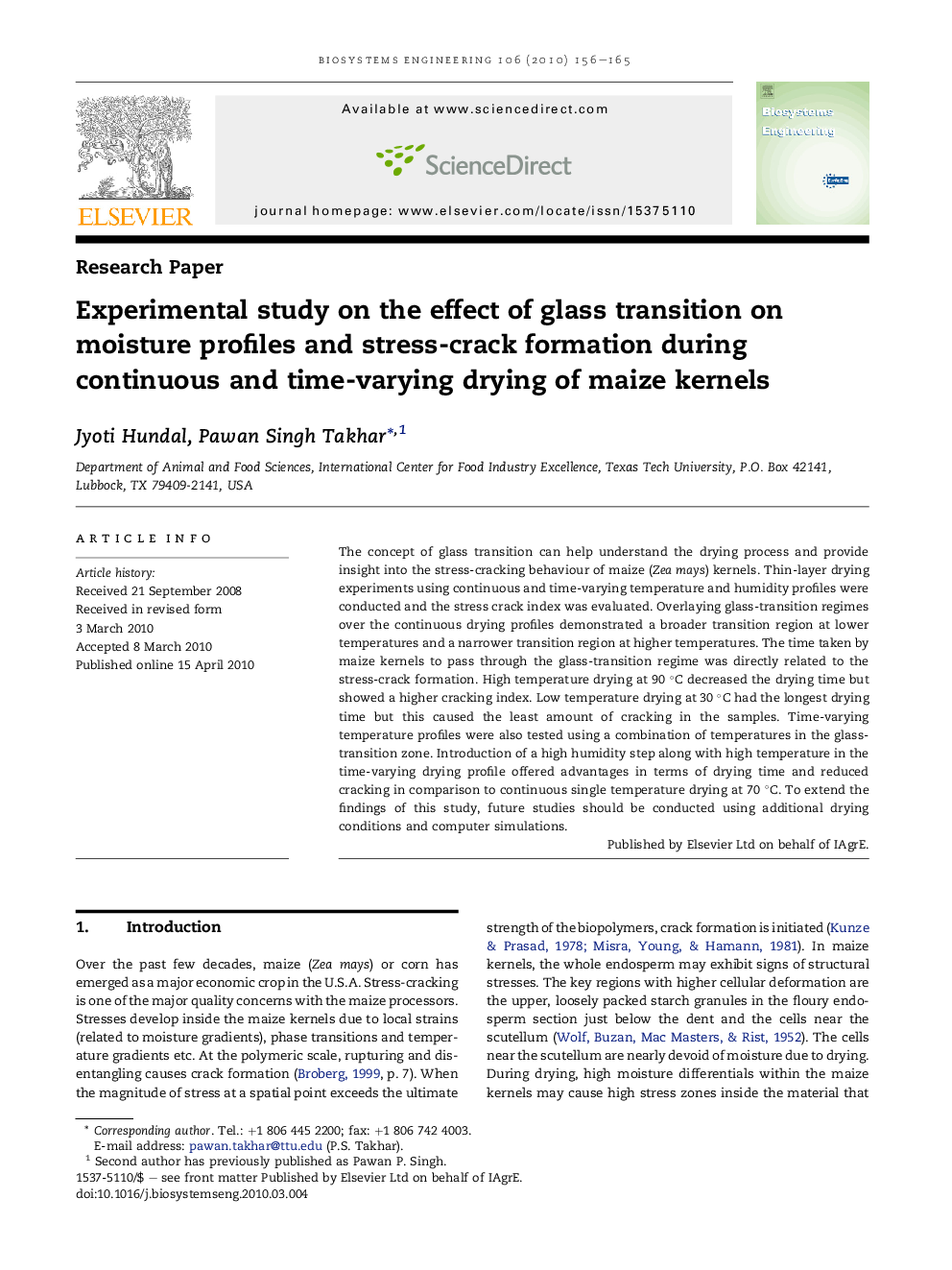| Article ID | Journal | Published Year | Pages | File Type |
|---|---|---|---|---|
| 1711837 | Biosystems Engineering | 2010 | 10 Pages |
The concept of glass transition can help understand the drying process and provide insight into the stress-cracking behaviour of maize (Zea mays) kernels. Thin-layer drying experiments using continuous and time-varying temperature and humidity profiles were conducted and the stress crack index was evaluated. Overlaying glass-transition regimes over the continuous drying profiles demonstrated a broader transition region at lower temperatures and a narrower transition region at higher temperatures. The time taken by maize kernels to pass through the glass-transition regime was directly related to the stress-crack formation. High temperature drying at 90 °C decreased the drying time but showed a higher cracking index. Low temperature drying at 30 °C had the longest drying time but this caused the least amount of cracking in the samples. Time-varying temperature profiles were also tested using a combination of temperatures in the glass-transition zone. Introduction of a high humidity step along with high temperature in the time-varying drying profile offered advantages in terms of drying time and reduced cracking in comparison to continuous single temperature drying at 70 °C. To extend the findings of this study, future studies should be conducted using additional drying conditions and computer simulations.
